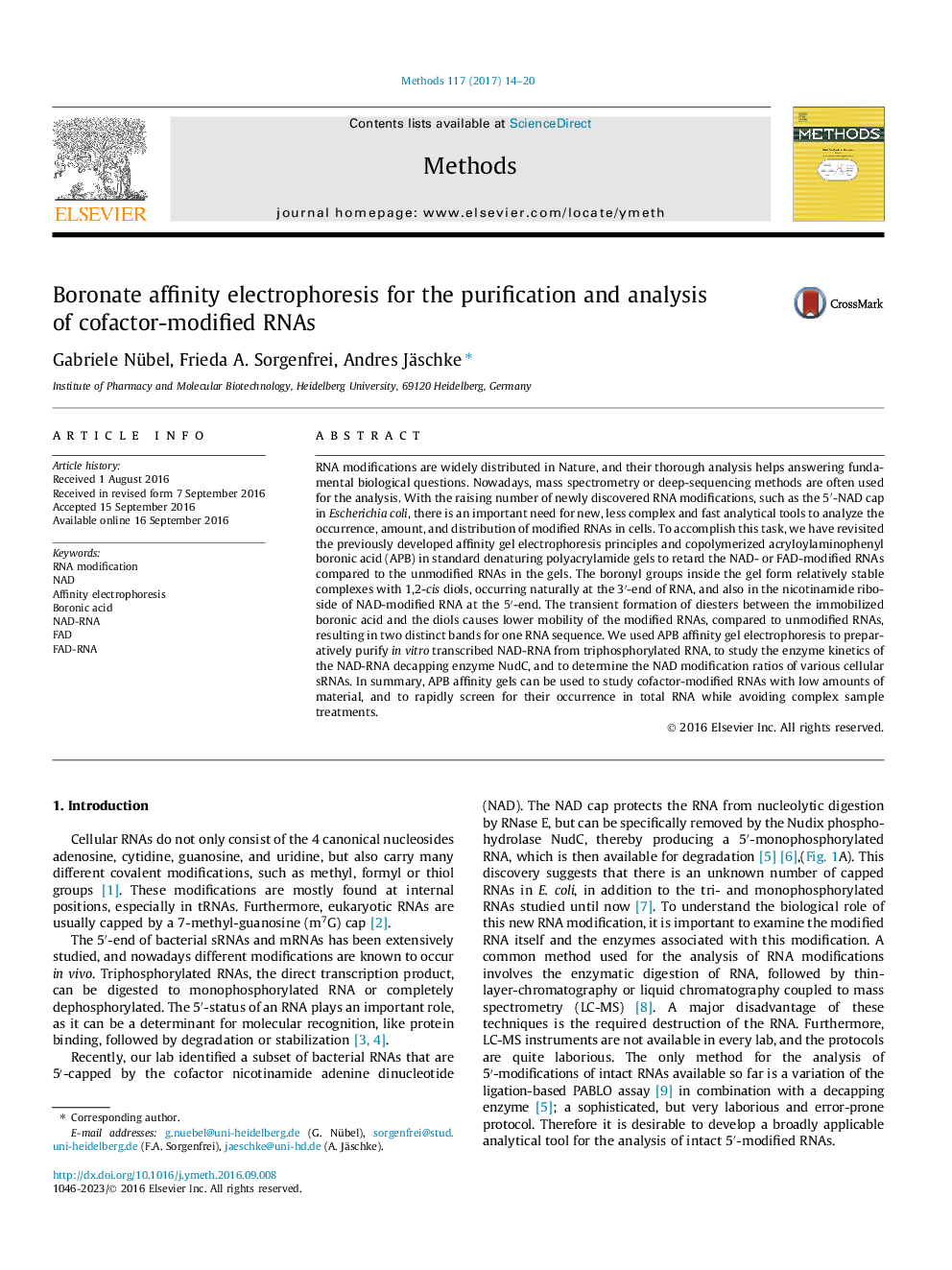| کد مقاله | کد نشریه | سال انتشار | مقاله انگلیسی | نسخه تمام متن |
|---|---|---|---|---|
| 5513461 | 1541209 | 2017 | 7 صفحه PDF | دانلود رایگان |

- Boronic acid-modified polyacrylamide gels retard NAD-RNA compared to unmodified RNAs.
- In vitro transcribed NAD-RNA can be purified on boronic acid-modified gels.
- The kinetics of NAD-RNA decapping enzymes can be easily measured.
- The NAD modification status of cellular sRNAs can be determined.
- Boronic acid-modified gels offer a possibility to screen for NAD-RNA in total RNA.
RNA modifications are widely distributed in Nature, and their thorough analysis helps answering fundamental biological questions. Nowadays, mass spectrometry or deep-sequencing methods are often used for the analysis. With the raising number of newly discovered RNA modifications, such as the 5â²-NAD cap in Escherichia coli, there is an important need for new, less complex and fast analytical tools to analyze the occurrence, amount, and distribution of modified RNAs in cells. To accomplish this task, we have revisited the previously developed affinity gel electrophoresis principles and copolymerized acryloylaminophenyl boronic acid (APB) in standard denaturing polyacrylamide gels to retard the NAD- or FAD-modified RNAs compared to the unmodified RNAs in the gels. The boronyl groups inside the gel form relatively stable complexes with 1,2-cis diols, occurring naturally at the 3â²-end of RNA, and also in the nicotinamide riboside of NAD-modified RNA at the 5â²-end. The transient formation of diesters between the immobilized boronic acid and the diols causes lower mobility of the modified RNAs, compared to unmodified RNAs, resulting in two distinct bands for one RNA sequence. We used APB affinity gel electrophoresis to preparatively purify in vitro transcribed NAD-RNA from triphosphorylated RNA, to study the enzyme kinetics of the NAD-RNA decapping enzyme NudC, and to determine the NAD modification ratios of various cellular sRNAs. In summary, APB affinity gels can be used to study cofactor-modified RNAs with low amounts of material, and to rapidly screen for their occurrence in total RNA while avoiding complex sample treatments.
Journal: Methods - Volume 117, 15 March 2017, Pages 14-20